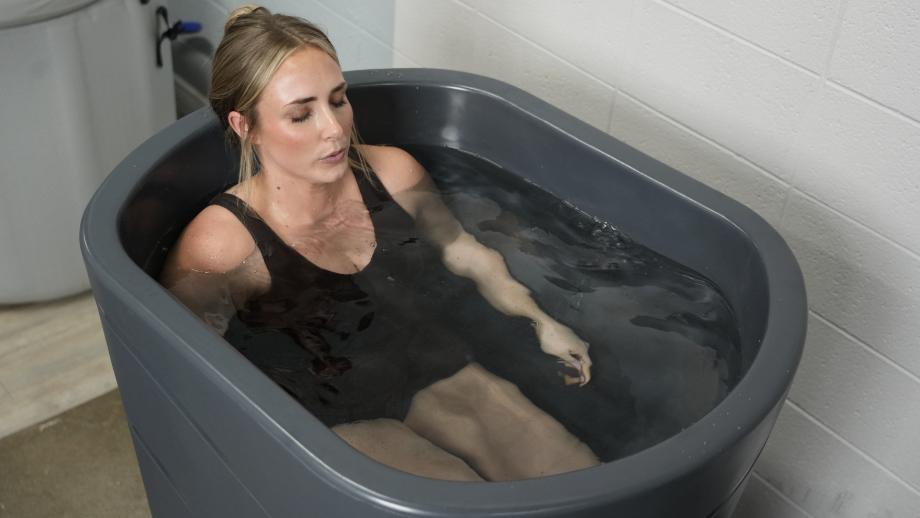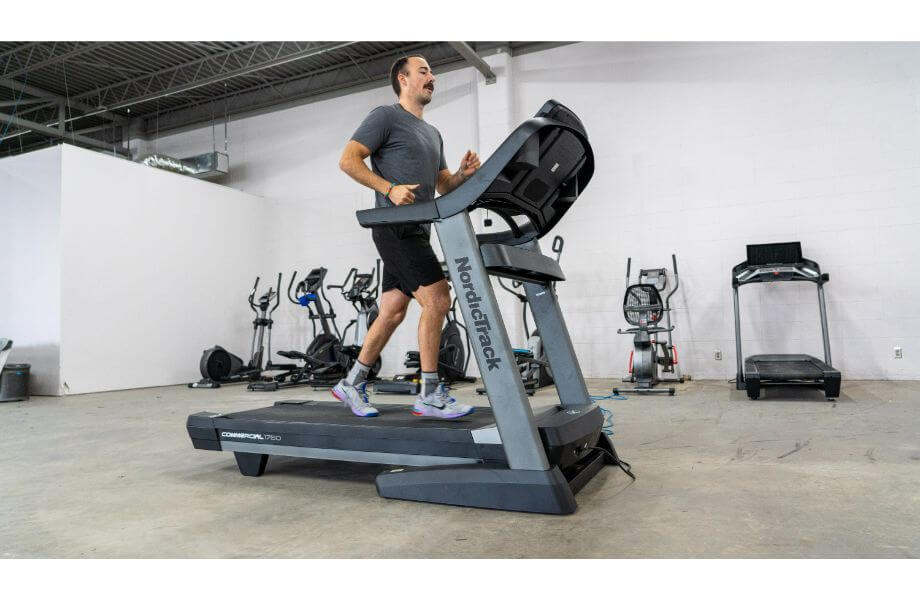While a sweat-inducing sauna session can do wonders for your mind and body, sometimes you have to be willing to get uncomfortable to maximize the health benefits of hydrotherapy. Instead of relying on warm water or hot steam to soothe sore muscles, turning the temperature to the opposite end of the spectrum can also be an effective way to support your recovery efforts.
Of course, the concept of cold therapy may not sound particularly enjoyable. After all, most people would rather bask in a hot tub for 30 minutes than subject themselves to even 30 seconds of exposure to frigid waters. However, just like we don’t judge a barbell until we get our hands on it, don’t knock an active recovery tactic till we’ve tried it.
RELATED: Cold Plunge Vs Hot Tub
As a certified personal trainer (CPT), longtime rugby player, and dedicated lifter, I’m invested in finding different ways to stay on top of my game physically and mentally. Over the years, I’ve tried everything from foam roller exercises to massage guns to yoga poses with varying degrees of success. Never afraid to try something new, I’ve even submerged myself in a trash can full of frigid ice water after a grueling rugby match.
But what exactly separates one form of cold water therapy from another? In this cold plunge vs ice bath breakdown, I’ll explore the similarities and differences between both methods so you can decide just how chilly your next active recovery session should be.
Medical disclaimer: This article is intended for educational and informational purposes only. It is not intended as a substitute for medical advice. For health advice, contact a licensed healthcare provider.
Quick Look: Cold Plunge Vs Ice Bath
While cryotherapy and cold therapy are often used interchangeably, the former specifically uses freezing or near-freezing temperatures to deliver different health benefits. Cold water immersion, which includes cold plunging and ice baths, offers several advantages, including reducing inflammation and speeding up muscle recovery. A go-to recovery technique utilized by professional and amateur athletes worldwide, some go the cold plunge route while others stick to the tried-and-true ice bath method.
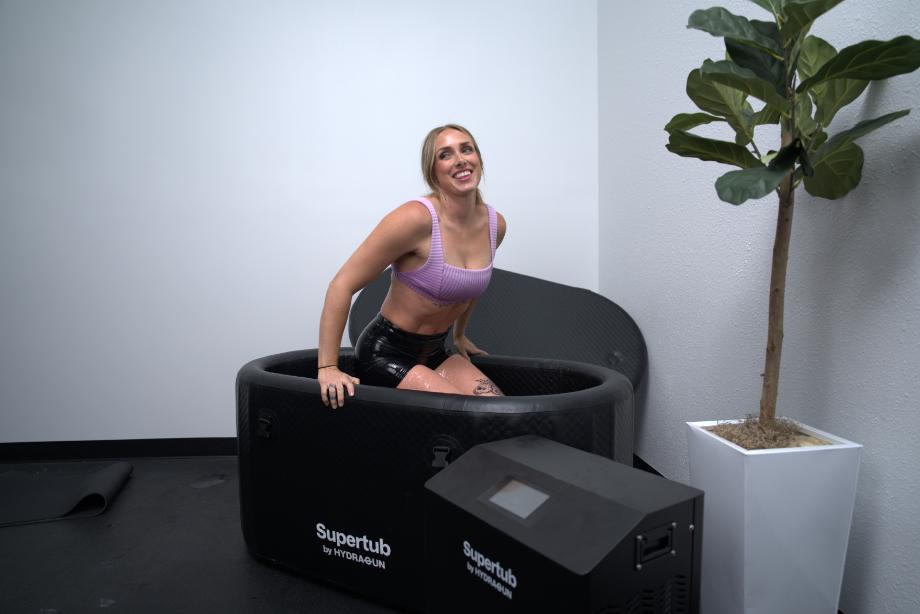
Although there are distinct differences between them—namely, the temperature and intensity—both have similar purposes. Still, some individuals may be better off going with a cold plunge vs an ice bath.
Who Should Use a Cold Plunge
- Fitness enthusiasts looking for muscle recovery options: Cold temperature exposure can help reduce muscle soreness and inflammation1, making a cold plunge a good post-workout activity for your health.
- General gym-goers: The average fitness fanatic may not be able to handle the intensity of an ice bath but may still want to support their muscle recovery.
- Health-conscious folks who want to boost their immune system: Cold plunges can stimulate the immune system2 by increasing the production of white blood cells, which help fight off infections.
- Those seeking improved mental health: Cold water immersion (CWI) can have an invigorating effect that may enhance your mood3 and help reduce anxiety.
- Those who want complete temperature control: The best cold plunge tubs have adjustable settings that allow you to set the exact temperature of the water, typically offering a range of 40 to 60 degrees Fahrenheit.
RELATED: How To Cold Plunge
Who Should Take an Ice Bath
- Athletes who need post-competition relief: An ice bath can provide much-needed help after an intense game or bout of physical activity by helping reduce soreness, inflammation, and pain.
- Individuals with weight-loss goals: A potential connection between ice baths and increased energy activity in brown fat tissues4 may make this cold immersion method useful for those trying to lose weight.
- Fitness enthusiasts with limited funds: Even a more budget-friendly cold plunge like The Cold Pod can cost around $200. However, you can make an ice bath for much less by filling your bathtub with several bags of ice and some cold-as-possible water.
RELATED: The Cold Pod Review
Cold Plunge Vs Ice Bath: What Are They?
Before we wade into the more complicated end of the science pool, let’s stay on the chiller side so you can have a clearer grasp of each form of hydrotherapy.
What Is a Cold Plunge and How Does It Work?
A health and wellness practice that dates back to the days of Roman baths, cold plunge therapy involves immersing your body in ice-cold water that’s typically between 53 to 60 degrees Fahrenheit. Luckily, you don’t have to stay long, as cold plunge sessions usually last between five and 15 minutes, depending on your tolerance and goals.
Why subject yourself to what may seem like torture? Cold water therapy works by constricting your blood vessels, helping reduce inflammation and soreness. Research also shows that cold plunge benefits include faster muscle recovery, lower stress levels, and improved blood circulation.
RELATED: Cryotherapy vs Cold Plunge
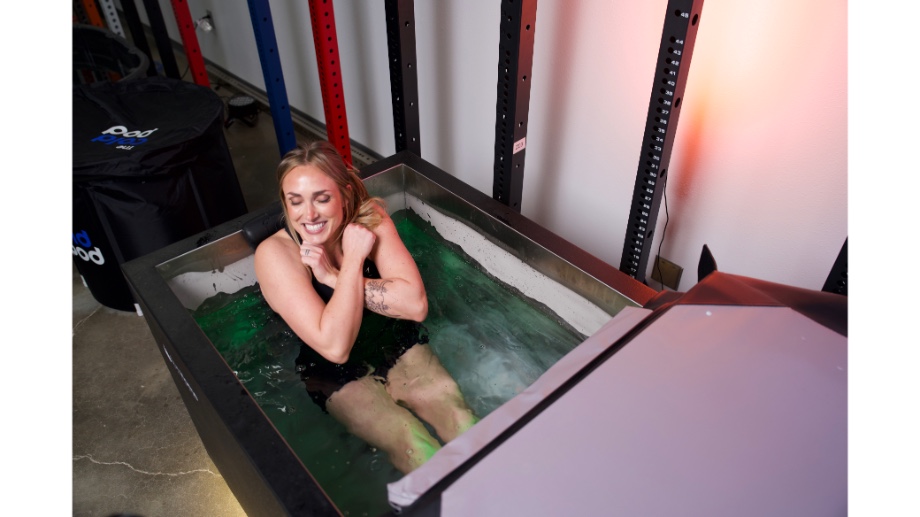
Fortunately, technological advances have made cold plunging much more accessible for us than our ancient brethren. Modern setups use tubs or specially designed cold plunge pools with adjustable settings that let you choose a specific water temperature. Meanwhile, filtration systems help keep the water clean and safe for regular use.
Unfortunately, a cold plunge tub isn’t the cheapest piece of home gym equipment, with some models costing nearly $10,000. But, even if a luxury model like the highly-rated Sun Home Cold Plunge Pro is way out of your price range, you can go the DIY cold plunge route to save money.
RELATED: Sun Home Cold Plunge Pro Review
What Is an Ice Bath and How Does It Work?
You may hear some fitness folks refer to a cold plunge as an ice bath—and vice versa.
Are they similar? Undoubtedly.
However, an ice bath isn’t exactly the same as taking the plunge in a tub of temperature-controlled water.
RELATED: Ice Bath Vs Cold Shower
In its simplest form, you can make an ice bath by filling a bathtub or large container with ice and cold water. However, unlike with a cold plunge, there isn’t a way to set a precise temperature. Ice baths don’t have a chiller or built-in cooling system, meaning your only way to control the temperature is to add (or subtract) ice.
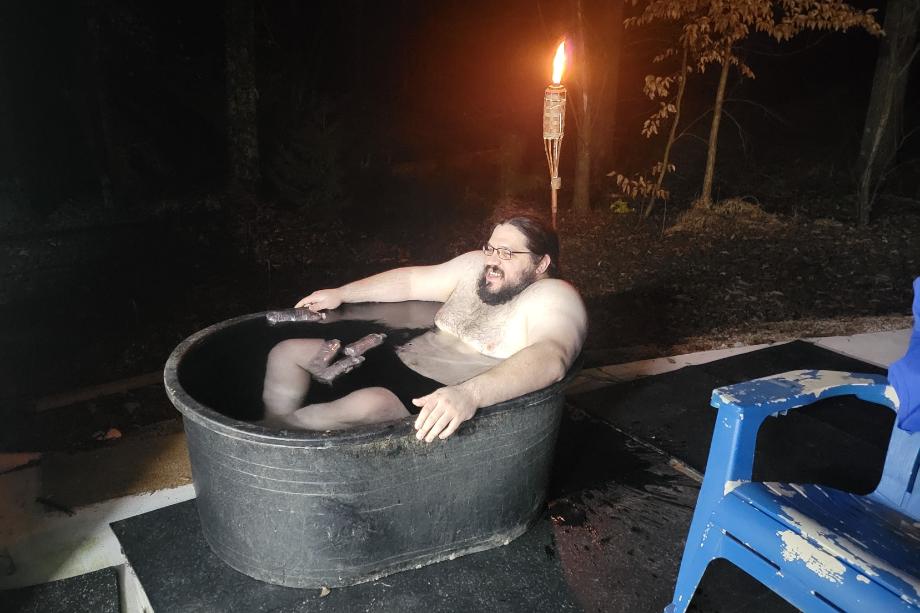
An ice bath works similarly to a cold plunge—just on a more intense level. While most folks set their cold plunge temperature between 53 and 60 degrees Fahrenheit, an ice bath usually measures between 33 and 39 degrees. That extreme cold can be quite a lot for beginners to handle, which is why you’ll see more high-level and professional athletes using ice baths rather than your average gym-goer.
RELATED: Ice Barrel Review
Benefits of Cold Plunges
We briefly touched upon some of the benefits of cold plunging earlier. So, let’s go ahead and dive into the research for a better understanding of the different claims associated with this ancient health practice.
May Help with Muscle Recovery
Cold plunges are most well-known for aiding with muscle recovery and reducing soreness. Once you hop in, the exposure to cold temperature helps reduce inflammation and numb your nerves, providing immediate (and much-needed) pain relief. Plus, this timeless practice can remove waste products like lactic acid from your muscles.
A 2022 study published in Sports Medicine5 found that submerging in cold water after high-intensity workouts was more effective in reducing muscle soreness than after hypertrophy and bodybuilding-style workouts. In addition, a 2018 systematic review in Frontiers Physiology6 examined different recovery techniques to reduce markers of muscle damage, soreness, fatigue, and inflammation.
While researchers found massage to be the most powerful technique for recovering from delayed-onset muscle soreness (DOMS) and fatigue, water immersion can have a “significant positive impact” as well.
RELATED: Cold Plunge Before Or After Workout
Helps Improve Blood Circulation
A cold plunge can actually enhance blood flow by causing your blood vessels to constrict. After that cold shock, your vessels will then dilate—a process known as vasoconstriction and vasodilation7. This enhances blood circulation, helping deliver oxygen and vital nutrients to tissues more efficiently.
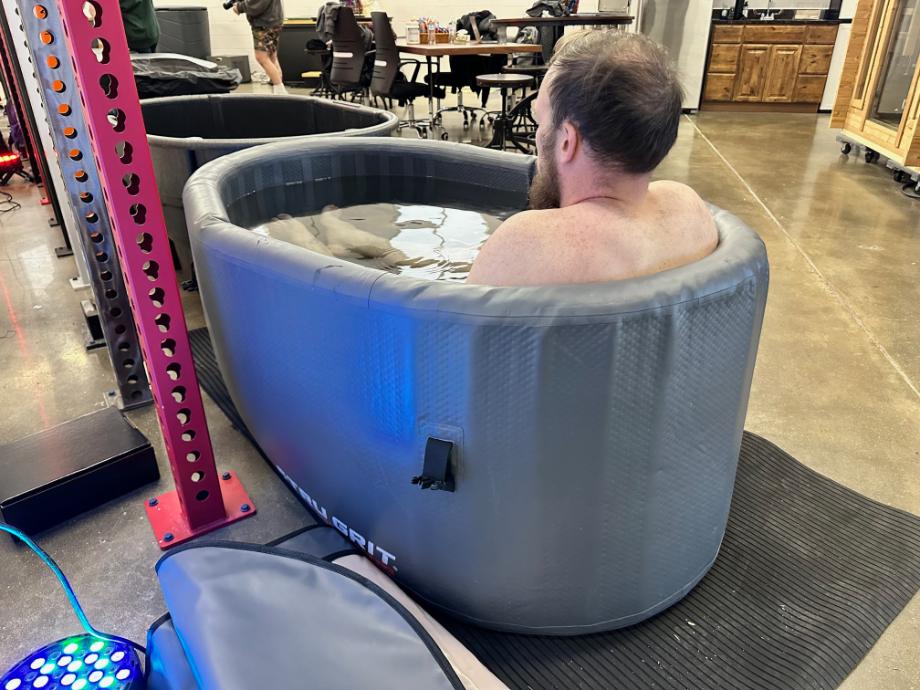
A 2016 study8 on the effects of cold water immersion (CWI) on muscle oxygenation during bouts of fatiguing exercise found that the treatment group had a significantly lower mean heart rate compared to the control group. CWI led to an increase in muscle oxygenation—the rate at which oxygen is delivered and used by muscle tissue—and a decreased perception of muscle soreness the day after exercise.
Supports Better Mental Health
Cold water therapy triggers the release of endorphins9—more commonly known as the “feel-good” hormones. These natural mood enhancers can help reduce stress and anxiety and improve overall well-being.
From a self-care perspective, sometimes a quiet cold plunge session is the ideal solution to silence negative thoughts. The cold exposure can wake you up mentally and physically, allowing you to stay in the present moment. Put on the right playlist and embrace the dopamine release as you chill out.
RELATED: Exercise And Mental Health
May Help Boost Your Immune System
While more research needs to be done in this area, cold water exposure has been linked to enhanced immune system function. Different forms of cold therapy increase the production of white blood cells, enhancing overall immune function.
So, if you want to keep your body’s natural defense system ready for battle, you should make cold plunging a consistent part of your recovery routine.
Benefits of Ice Baths
Like the cold plunge, you can unlock valuable ice bath benefits if you’re willing to deal with frigid temperatures.
Can Help With Muscle Recovery
Like cold plunges, ice baths are an excellent potential muscle recovery solution. During my college rugby career, I often utilized post-match ice baths as a quick way to reduce my body temperature and kickstart the recovery process.
Although it was by no means a pleasant experience, it did help reduce soreness, especially during tournaments where my team played as many as six or seven matches within two days.
May Help Reduce Pain and Inflammation
“Put ice on it” is a familiar phrase for a reason. Whether it’s an ice pack, a bag of frozen veggies, or an ice bath, relying on water in its most ultra-frigid form can be an effective way to reduce pain and inflammation.
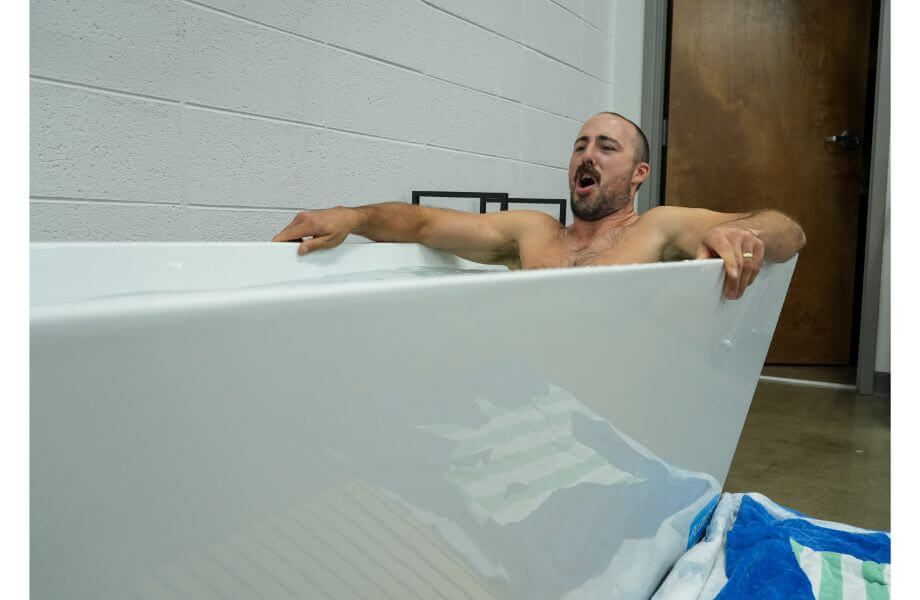
How does this work, exactly? An ice bath is a fairly intense example of cryotherapy that numbs the affected area, constricts blood vessels, and decreases blood flow and inflammation.
May Help With Weight Loss
Let’s be clear: You need to be in a calorie deficit to lose weight. But including ice baths in your wellness routine could give you an additional boost on your fat-loss journey.
According to a 2019 study4 on therapeutic tools to activate brown adipose tissue (BAT) and combat obesity, cold exposure increases thermogenic activity and overall expenditure in BAT. In addition, cold exposure can help regulate key weight-related metrics such as glucose levels, insulin sensitivity, and lipid metabolism.
RELATED: How to Lose Body Fat
Key Similarities Between a Cold Plunge and Ice Bath
Despite their contrasting temperatures, cold plunges and hot tubs share several similarities that make them popular choices for recovery and relaxation. Here are some fundamental aspects that both therapies have in common:
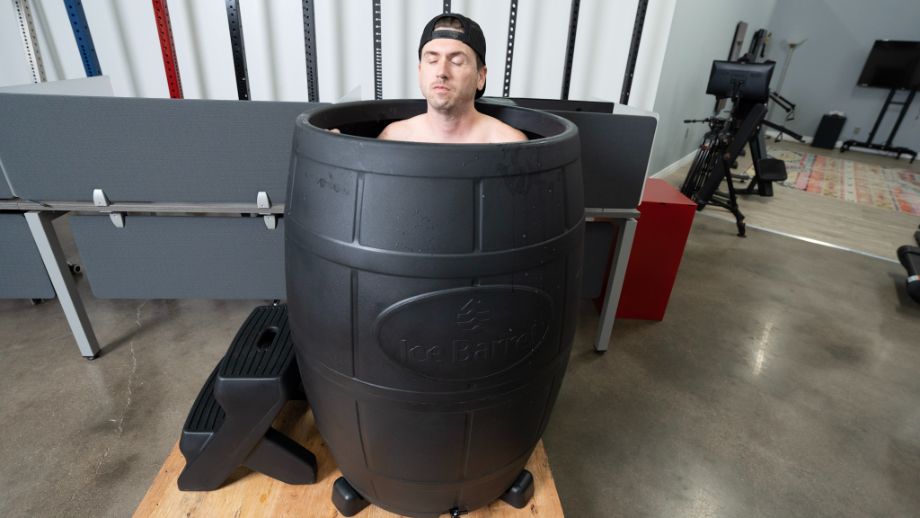
- Both are forms of cryotherapy (or cold water therapy)
- Both are active recovery methods utilized by lifters, athletes, and fitness enthusiasts
- Both can help with muscle recovery and reduce symptoms of delayed-onset muscle soreness (DOMS)
- Both can help reduce pain and inflammation
- Both can help support your mental health and overall well-being
RELATED: Inergize Cold Plunge Tub Review
Important Differences Between a Cold Plunge And Ice Bath
What separates a cold plunge from an ice bath? Though closely related, these key characteristics distinguish the two from each other:
| Cold Plunge | Ice Bath | |
| Temperature Range | 53 to 60 degrees Fahrenheit | 33 to 39 degrees Fahrenheit |
| Temperature Control | Adjustable settings | Must add ice for colder temperature |
| Intensity | Moderate | High |
| Convenience | Built-in cooling; easy to use once installed | Takes more time to set up and maintain cold temperature |
| Maintenance | Requires routine draining and cleaning | Minimal to none |
| Cost | Expensive initial cost, especially for higher-end models | Inexpensive, especially if using a bathtub or large container |
| Users | Wellness centers, gyms, general fitness enthusiasts | Athletes |
RELATED: Cold Plunge Vs Sauna
How To Choose Between a Cold Plunge And Ice Bath
Should you take the plunge in cold but somewhat tolerable water? Or should you empty out your ice machine and prepare for the mental grind of making it through an ice bath session?
Here are factors to consider when deciding which form of cold water therapy you should utilize:
Budget
How much are you willing to spend to really cool down? Cold plunge tubs are more expensive and require more maintenance than an ice bath. Expect to pay thousands of dollars for a high-quality cold plunge. On the other hand, you can make an ice bath at home for a fraction of the cost.
RELATED: Cold Plunge Maintenance
Temperature Tolerance
A cold plunge isn’t that much warmer than an ice bath, but there can be a sizable gap in temperature depending on the settings you use. Beginners should be able to handle a cold plunge better than an ice bath. As a longtime athlete who’s sat in more than a few tubs of ice-filled water, I can confirm ice baths aren’t for the faint of heart.
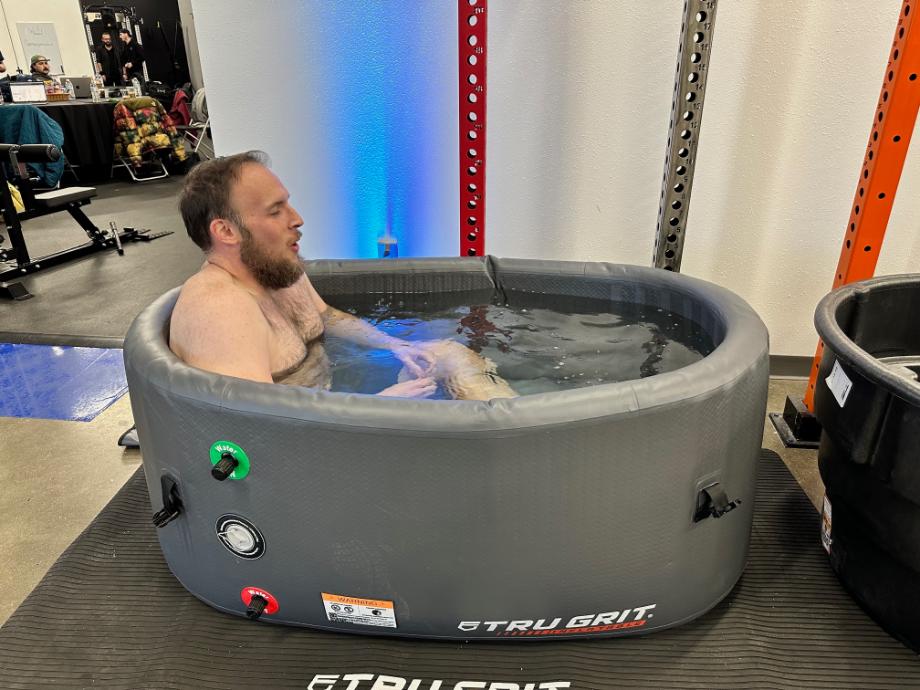
Health Conditions
Take into account any medical conditions that may make an ice bath (or cold plunge) dangerous. For example, Raynaud’s syndrome causes blood vessels to narrow to the point that there may be little to no blood flow, making cold therapy a poor idea in general.
Certain cardiovascular conditions may be exacerbated by cold water therapy, especially if you have a history of high blood pressure or a stroke. Consult with a doctor or healthcare provider before you immerse yourself in cold water therapy.
RELATED: Cardiovascular Fitness
Cold Plunge vs Ice Bath: Final Thoughts
While it would be a slight stretch to call myself a cold therapy connoisseur, my GGR colleagues and I can confirm that cold plunges and ice baths can be effective ways to stay on top of your game. Both active recovery methods help you develop mental fortitude by forcing you to “survive” even just a few minutes of extreme cold exposure. Most importantly, the physical benefits may allow you to consistently perform at your best.
What form of cryotherapy you choose ultimately comes down to your budget and personal preferences. Are you willing to ice-olate yourself for 5 minutes? Or would you rather keep the temperature more tolerable for a longer session?
Either way, chilling out for a bit may light the inner fire that leads to a monstrous session the next time you hit the gym.
Cold Plunge vs Ice Bath: FAQs
Is a cold plunge the same as an ice bath?
Although the terms are often used interchangeably, a cold plunge is not the same as an ice bath. While a cold plunge uses water that’s usually between 53 and 60 degrees Fahrenheit, an ice bath is much colder—around 33 to 39 degrees.
Are there any negative side effects to cold plunging?
A cold plunge can cause a rapid rise in your heart rate, breathing, and blood pressure from the shock of immersing yourself in cold water. Prolonged exposure can lead to hypothermia—a condition that occurs when your core body temperature drops below 95 degrees Fahrenheit.
How cold is an ice bath?
An ice bath is usually between 33 to 39 degrees Fahrenheit.
How long should you stay in a cold plunge compared to an ice bath?
As a certified personal trainer (CPT) and longtime athlete, I recommend starting with a five-minute cold plunge session before working your way up to as long as 15 minutes. On the other hand, ice bath sessions should be shorter, with most lasting between five to 10 minutes due the colder temperature.
References
- Petrofsky JS, Khowailed IA, Lee H, Berk L, Bains GS, Akerkar S, Shah J, Al-Dabbak F, Laymon MS. Cold Vs. Heat After Exercise-Is There a Clear Winner for Muscle Soreness. J Strength Cond Res. 2015 Nov;29(11):3245-52. doi: 10.1519/JSC.0000000000001127. PMID: 26502272.
- Janský L, Pospísilová D, Honzová S, Ulicný B, Srámek P, Zeman V, Kamínková J. Immune system of cold-exposed and cold-adapted humans. Eur J Appl Physiol Occup Physiol. 1996;72(5-6):445-50. doi: 10.1007/BF00242274. PMID: 8925815.
- Yankouskaya, A., Williamson, R., Stacey, C., Totman, J. J., & Massey, H. (2023). Short-Term Head-Out Whole-Body Cold-Water Immersion Facilitates Positive Affect and Increases Interaction between Large-Scale Brain Networks. Biology, 12(2), 211. https://doi.org/10.3390/biology12020211
- Da Silva, C. P. V., Hernández-Saavedra, D., White, J., & Stanford, K. (2019). Cold and Exercise: therapeutic tools to activate brown adipose tissue and combat obesity. Biology, 8(1), 9. https://doi.org/10.3390/biology8010009
- Moore, E., Fuller, J. T., Buckley, J. D., Saunders, S., Halson, S. L., Broatch, J. R., & Bellenger, C. R. (2022). Impact of Cold-Water Immersion Compared with Passive Recovery Following a Single Bout of Strenuous Exercise on Athletic Performance in Physically Active Participants: A Systematic Review with Meta-analysis and Meta-regression. Sports Medicine, 52(7), 1667–1688. https://doi.org/10.1007/s40279-022-01644-9
- Dupuy, O., Douzi, W., Theurot, D., Bosquet, L., & Dugué, B. (2018). An Evidence-Based approach for choosing post-exercise recovery techniques to reduce markers of muscle damage, soreness, fatigue, and inflammation: A Systematic Review with Meta-Analysis. Frontiers in Physiology, 9. https://doi.org/10.3389/fphys.2018.00403
- Flouris AD, Westwood DA, Mekjavic IB, Cheung SS. Effect of body temperature on cold induced vasodilation. Eur J Appl Physiol. 2008 Oct;104(3):491-9. doi: 10.1007/s00421-008-0798-3. Epub 2008 Jun 21. PMID: 18568361.
- Yeung SS, Ting KH, Hon M, Fung NY, Choi MM, Cheng JC, Yeung EW. Effects of Cold Water Immersion on Muscle Oxygenation During Repeated Bouts of Fatiguing Exercise: A Randomized Controlled Study. Medicine (Baltimore). 2016 Jan;95(1):e2455. doi: 10.1097/MD.0000000000002455. PMID: 26735552; PMCID: PMC4706272.
- Esperland D, de Weerd L, Mercer JB. Health effects of voluntary exposure to cold water – a continuing subject of debate. Int J Circumpolar Health. 2022 Dec;81(1):2111789. doi: 10.1080/22423982.2022.2111789. PMID: 36137565; PMCID: PMC9518606.



